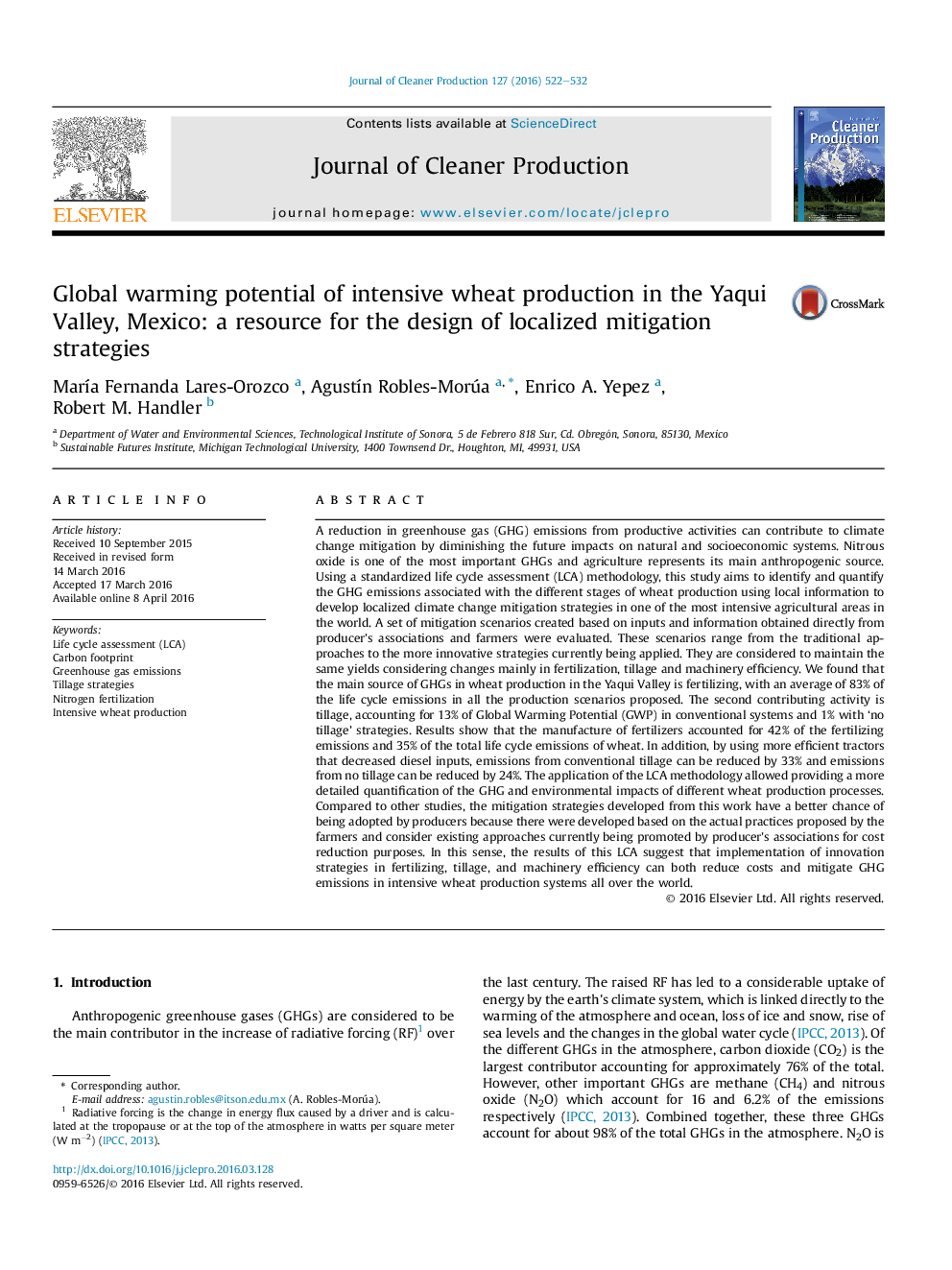| کد مقاله | کد نشریه | سال انتشار | مقاله انگلیسی | نسخه تمام متن |
|---|---|---|---|---|
| 1744109 | 1522122 | 2016 | 11 صفحه PDF | دانلود رایگان |
A reduction in greenhouse gas (GHG) emissions from productive activities can contribute to climate change mitigation by diminishing the future impacts on natural and socioeconomic systems. Nitrous oxide is one of the most important GHGs and agriculture represents its main anthropogenic source. Using a standardized life cycle assessment (LCA) methodology, this study aims to identify and quantify the GHG emissions associated with the different stages of wheat production using local information to develop localized climate change mitigation strategies in one of the most intensive agricultural areas in the world. A set of mitigation scenarios created based on inputs and information obtained directly from producer's associations and farmers were evaluated. These scenarios range from the traditional approaches to the more innovative strategies currently being applied. They are considered to maintain the same yields considering changes mainly in fertilization, tillage and machinery efficiency. We found that the main source of GHGs in wheat production in the Yaqui Valley is fertilizing, with an average of 83% of the life cycle emissions in all the production scenarios proposed. The second contributing activity is tillage, accounting for 13% of Global Warming Potential (GWP) in conventional systems and 1% with ‘no tillage’ strategies. Results show that the manufacture of fertilizers accounted for 42% of the fertilizing emissions and 35% of the total life cycle emissions of wheat. In addition, by using more efficient tractors that decreased diesel inputs, emissions from conventional tillage can be reduced by 33% and emissions from no tillage can be reduced by 24%. The application of the LCA methodology allowed providing a more detailed quantification of the GHG and environmental impacts of different wheat production processes. Compared to other studies, the mitigation strategies developed from this work have a better chance of being adopted by producers because there were developed based on the actual practices proposed by the farmers and consider existing approaches currently being promoted by producer's associations for cost reduction purposes. In this sense, the results of this LCA suggest that implementation of innovation strategies in fertilizing, tillage, and machinery efficiency can both reduce costs and mitigate GHG emissions in intensive wheat production systems all over the world.
Journal: Journal of Cleaner Production - Volume 127, 20 July 2016, Pages 522–532
